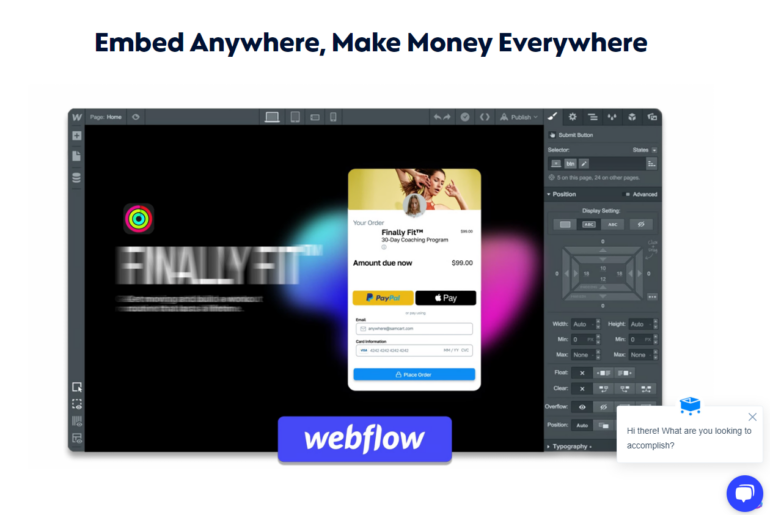Online marketing has become more relevant in recent years due to the phenomenal rise of social media. It has become a new avenue that offers a lot of potential for earning leads and conversions.
You’ve probably encountered Buffer and Hootsuite if you’re assigned to digital or social media marketing. Although many marketers use these tools simultaneously, some wonder if one is better than the other.
Both are high-quality products that appear impressive, which is why Hootsuite vs Buffer is an interesting topic to discuss.
However, before we compare these tools, let’s first discuss why social media management tools are essential for digital marketing teams.
The Importance of Social Media Management Tools
It may be somewhat intimidating to consider all the daily tasks social media marketers must accomplish, from analytics and reporting to content creation and publication.
The complexity of marketing might be overwhelming if their marketing efforts require regular updates across different platforms. This is where social media management tools come in. They make your tasks easier and more convenient.
Below are some of the specific advantages of using social media management tools.
1. Efficient Management of Social Media Accounts
As you expand your presence on different networks, updating your company’s social media account can be an excruciating task. Aspects like login credentials and learning different user interfaces may affect your productivity. Also, most tools on social platforms are designed for individuals, not business entities.
If you’re managing the accounts manually, mistakes can easily happen. That’s why a specialized social media management platform is a boon to marketers. It enables you to handle all your accounts in a single login.
Since the software features a streamlined interface and various business-related tools, managing different social media accounts would be easier.
2. Post Scheduling
Using a social media management tool, you may schedule social media postings in advance. This feature will make it easier to conceptualize and create content that follows your marketing strategy.
Otherwise, it would be almost impossible to be on top of things as social media runs 24/7.
For example, you want to market your product or service on certain holidays. You won’t have to do it in real-time because the marketing tool enables you to post automatically on the exact day.
Those who have followed a social media marketing plan will often outperform those marketers who do not. Like any business aspect, it is necessary to establish your goals and the means or material required to fulfill them.
By preparing ahead of time, you’ll be more equipped to meet your objectives and better positioned for success.

3. Managing Communications
Social media teams have the difficult task of monitoring conversations with customers who have different inquiries. This is more true when managing multiple accounts across various social media platforms.
Most of the time, handling many conversations and responding to them promptly is a tremendously challenging task.
With the help of a social media management tool, you can monitor all your communications more efficiently. Since the software allows you to work in a single interface, responding becomes faster and easier.
Some tools also let you look for messages via keyword, which allows you to group the conversations and send replies in an instant. Doing so saves time on your part and confidence in the recipient that you’re easily reachable.
4. Engagement Tracking
Customer engagements are essential in any social media marketing campaign as they define how your audience interacts with your social media posts. By understanding the engagements you’re receiving, devising a better marketing strategy becomes easier.
Most digital marketers consider engagement rates as the currency in social media marketing. That’s because it provides an insight into your marketing performance and the effectiveness of your content.
A social media management tool enables you to track the engagements of your accounts in one place. This feature saves you time and effort that you can dedicate to other tasks.
5. Notifications Update
Social media platforms have made it significantly easier for users to contact companies than ever before. Gone are the days when you have to call or send an email to inquire about a particular aspect of products or services.
Customers may ask questions about special offers or bulk orders. Others may comment about a complaint, and some of your followers might echo the same sentiments.
If you cannot reply accordingly, you may inadvertently lose potential customers or damage your reputation due to not responding to valid complaints and inquiries.
Social media management tools can let you monitor and manage notifications or interactions. It may also show you mentions and indirect public posts that pertain to your brand.
6. Data Analysis
To develop a logical and effective social media marketing plan, it’s essential to consider the information gathered over time.
Data may include the number of retweets, how many comments on a Facebook post, and other interactions of your accounts in the past month.
Having this information may allow you to perform tests about the format, timing, or graphics. Once you understand the data you’ve gathered, you can build your social media strategy accordingly using it.
Each social network has its own set of simple tools that may assist you with activity and performance analysis. However, you may not get the detailed analysis your business needs to create an enhanced marketing strategy.
Not only a social media management tool can provide a comprehensive data analysis. It can also give an overall insight into all of your accounts.
7. Content Management
Regardless of what your marketing strategy is, content is the driving force behind it. Whether posting a relevant meme or parody of a trending topic, marketers have the daunting task of producing engaging content. You might have a lot of ideas when you first start, but at some point, you might find it challenging.
Many attest that producing a consistent content variety is one of the most challenging aspects of social media marketing.
While it’s expected that you’re capable of creating your own material, it is also necessary to consider curating content. It means you’re looking for content made by others to post on your social media accounts.
You’ll effectively reduce the quantity of material you must make while simultaneously providing you with a more extensive range of content subjects to publish.
However, keep in mind that curated content won’t directly impact conversions. Sharing relevant material will help you better connect with your audience while promoting your brand to potential new followers.
Many social media marketing tools have content-curating features. It could be anything basic like RSS feeds to provide easy access to popular content or something more complex like an integrated curator tool.
8. Competitor Monitoring
In today’s business landscape, you’re more likely to promote a product or service already available in the market. There will always be competition, regardless of the field you specialize in or which social network you favor.
Monitoring your competitors can aid you in developing a more effective social media strategy for your company.
The goal of competitor monitoring is to evaluate how your business rivals fare. The analysis gained from this feature may give you an edge over your competitors.
For example, a rival company targets this particular audience with great results. You may also employ the same strategy with a couple of tweaks and updates to elevate your marketing efforts.
You can have a detailed competitor analysis with a social media management tool. Overall, this will help you better understand your standing and how it compares to your industry’s rivals.

Hootsuite vs Buffer: The Comparison
Now that we know how a social media management tool helps our marketing strategy, it’s time to compare two of the most popular ones.
Here is a quick comparison of the two social media management tools, and right below it is the specific features of Buffer vs Hootsuite.
| Hootsuite | Buffer | |
|---|---|---|
| Plans | Professional, Team, Business, Enterprise | Free, Essentials, Team, Agency |
| Pricing | Starts at $49 / month | Starts at $5/ month per social channel |
| Supported Platforms | TikTok, Instagram, Facebook, Twitter, YouTube, Linkedin, Pinterest | Instagram, Facebook, Twitter, Pinterest, Linkedin, Shopify |
| Primary Focus | Publishing, Engagement, Monitor, Advertise, Analyze | Publishing, Analytics, Engagement |
| Target Market | Large Companies and Corporations | Small and Medium-Sized Businesses |
Company Background
Hootsuite is one of the most recommended social media management solutions. It is used in almost all countries and major universities. The company claims it has over 200,000 paid subscribers who use its software.
Hootsuite helps organizations fulfill their campaigns while offering better opportunities provided by the ever-changing social media landscape.
On the other hand, Buffer has a team of 85 people scattered across 15 countries worldwide. According to its official website, it has over 140,000 customers and continues to grow. The company aims to deliver a top-notch product, gain notoriety with its customers, and build a community centered on communications.
Design
Effortless onboarding and intuitive UI/UX design are important because they make it easier for you and other users to learn to use the software faster. It also allows for an easier structuring of the processes to integrate with your marketing strategy.
Hootsuite features multiple widgets on its dashboard, and navigating its numerous features is easy. For those unfamiliar with management tools, though, familiarizing yourself with its functions may take time.
The dashboard includes a sidebar with access to all of the software’s major features. You can see feeds on the sidebar showing updates from your social profiles. It allows you to track the activities and interactions easily.
You can categorize the feeds into boards and label them accordingly for better monitoring. The primary workspace is located in the middle.
On the other hand, Buffer’s user interface is more user-friendly as it showcases fewer tabs. All of its core features are available via the dashboard.
Tabs for Analytics, Engagement, and Publishing are readily available with your synched social accounts shown on the left side.
Posting new content is also easier, thanks to the Buffer queue. This section also allows you to see the analytics and scheduled posts.
Publishing and Scheduling Features
Among the core benefits of having a social media management platform is the ability to publish content on different platforms. Not only that, but you should also be able to dictate when it will appear on your followers’ feed.
If you’re the only one managing your company’s social media accounts, this may not offer much of an advantage. However, having a dedicated interface for publishing and scheduling becomes definitively significant if you have a team.
A management tool helps enforce a workflow that minimizes mistakes and redundancy on the content you’re posting.
Hootsuite can automate your scheduled tasks but may compromise some control. Once you enable AutoSchedule, the software will choose an appropriate time for your content to be available publicly.
Unless you set them manually, Hootsuite may opt not to follow the schedule in the same order you submitted the posts.
With its Bulk Composer, it’s easier for this tool to upload multiple posts simultaneously. It lets you select up to 350 messages (CSV file format) and submit them all at once.
Remember that this feature is only available in Professional and higher-tier plans.
Meanwhile, Buffer lets you make a custom schedule specifying when social media posts should be published.
Whenever you submit a new post, it’ll take the next open slot. Like Hootsuite, you may schedule posts manually at any moment. The difference is that the queue will follow the order the content is uploaded.
You may also change the publishing schedule, which means you can have fewer postings on selected days. With the capacity to schedule articles easier and link RSS feeds, Buffer is more versatile and supports more third-party apps than Hootsuite.
Speaking of RSS feeds, both tools are great for posting and managing content. Lastly, Hootsuite has its Syndicator, while Buffer showcases the Feeds feature.
Analytics
Both tools provide dynamic features for analyzing how your followers interact with your content.
Hootsuite’s free edition provides basic reports that show the number of posts published, followers count, and a general insight into engagement rates. Once you avail of the Professional Plan or higher, you’re entitled to a more detailed analytics report.
With advanced reports, you can access data such as which posts followers interact with, their demographics, and other relevant information. You’re able to know which users in your company respond to the comments and how fast they do so if you have the Enterprise plan.
On the other hand, Buffer only allows analytics access for users with the Pro or higher package. You have access to Posts Report with the base Pro plan, which indicates the posts your audience engaged in the most and the number of clicks they generated.
You may receive more extensive reports once you get the Business plan. Data like follower growth and engagement rates are also available.
These reports are extractable via the Export data as a CSV file function. This file format is supported by numerous programs, making it easier to examine and analyze.
Buffer has also developed a new app called Buffer Analyze that gives users even more analytical features. With this tool, you can receive an engagement overview of connected Instagram and Facebook business accounts.
Curated Content Management
As mentioned earlier, filling your social media timeline with engaging content might be challenging. Keeping up with social media typically entails discovering new information to share.
Hootsuite and Buffer have content curation tools that aid in searching for posts, news, photos, or videos that can garner interest from your followers.
Hootsuite provides extra methods for finding material relevant to your marketing campaigns without using third-party tools. For instance, you can make columns on Instagram or Twitter using hashtags or trending topics of the users you follow. Then, retweet or share the posts you find interesting with a few clicks.
The Content Inbox, exclusively accessible for Pro and higher plans, is Buffer’s premier tool for curated content management. This feature allows you to include RSS feeds in a dashboard tab to find materials and add them to your queue.
If you choose a cheaper plan, you may still add posts to your queue with the help of third-party apps. On top of that, you’ll have to search manually for the content.
Advertising
Sometimes, you may need to operate a sponsored promotional campaign to enhance your marketing efforts. For a fee, you have the chance to make your post appear in the feeds of users not yet exposed to your content.
When creating a paid campaign, you have to define specifics regarding the advertisement, such as the schedule and demographics.
Hootsuite is one of the few social media management tools that provide advertising solutions. You can develop and operate ad campaigns on multiple platforms from a single dashboard.
It is called Hootsuite Ads, which is different from the default social media management tool. You’ll have to pay separately if you’re availing of this service.
Buffer doesn’t feature a tool that provides similar functionalities to the Hootsuite Ads. You may still operate ad campaigns via Google or Facebook, but you must do it with separate tools.
Communications Tracking
The free and paid plans of Hootsuite let you track and manage the messages and comments received by your social media accounts. Responding to tweets, Facebook messages, and YouTube comments from one location is possible by creating a tab within the program.
When combined with other tools, your marketing team can easily manage interactions and stay active in conversations from all platforms.
Meanwhile, Buffer offered an expensive program called Reply. The company stopped the service in 2020 and recommended third-party apps to subscribers.
Zendesk, Zoho Desk, and Spark Central are the apps Buffer suggested for social media conversation management.
Team Management
Both Buffer vs Hootsuite allows multiple users to manage social media accounts.
The convenient aspect is that you can provide access without revealing sensitive information like passwords. This is advantageous because if one of your digital marketers resigns, they won’t be able to access the accounts easily.
Hootsuite offers several features for categorizing your personnel. You may create groups like Teams, Organizations, and Team Members.
These designations enable you to perform extensive marketing campaigns efficiently. For example, you may give access to a third party for a specific account.
Meanwhile, your in-house team manages the other social media profiles. This is possible without compromising functionality and security.
If you’re managing a large team, Hootsuite vs Buffer is the better choice.
Buffer also allows you to manage which users can access specific social media channels. Functionality is fairly customizable, as you can restrict certain features like posting and commenting.
You may also impose approval on every post before it becomes available.
The Business plan of Buffer has two core permission levels: Manager and Contributor. Manager access lets you adjust publishing schedules and make changes. On the other hand, Contributor accessibility is more restricted. You may not post anything on the accounts without permission or not at all.
Security
Hootsuite is designed with strong security features as it has a variety of solutions that can protect your accounts in the event of a possible breach. It has dual authorization systems that prevent others from posting the wrong content.
The software enforces HTTPS settings that keep your access credentials safe. These settings are always enabled whether you’re using Hootsuite from a desktop, laptop, or portable smart device.
Buffer also employs two-factor authentication to increase security. You will be prompted to enter a second authentication code when you sign in.
The code will be available on your mobile phone via SMS or through an authenticator program.
Pricing
The price is a critical factor when choosing a social media management tool. More often than not, companies consider it a deal-breaker.
Hootsuite vs Buffer has different pricing plans that require a basic overview. You must also consider that most management solutions have additional costs that are not highlighted. Ensure you read all the details about the inclusions and exclusions of the plan before considering it.
- Hootsuite
The website offers four paid plans tailored to different business needs.
It starts with the Professional, currently priced at $49 a month. You can only have one user and 10 social accounts. Hootsuite offers a 30-day trial for this plan.
The Team plan has additional features like three users allowed, 20 accounts, and team access management.
Assigning your team members posts or comments is also possible. It also has a free trial period. The monthly payment is $129.
If you want more functionalities, you may get the Business plan, priced at $739 per month. You can have five users, 35 social accounts, review messages, integration with premium apps, and round-the-clock support.
Enterprise account is the most featured-packed plan of Hootsuite. You’ll have to contact its website to know the pricing.
In addition to all features of the previous plans, the Enterprise plan allows more users, 50+ social accounts, and automatic assignment to team members. Furthermore, you can have quarterly business reviews, Hootsuite Social Advertising, promote unlimited posts, team performance reports, and custom solutions.
- Buffer
The basic paid plan of Buffer is called Essentials, and it charges $5 per month for every social channel. You can add unlimited social media channels to the plan with a 2,000 limit on scheduled posts. Only one user is allowed access under this plan.
The team plan charges $10 per month. You’ll have all the same benefits as the previous tier but can have unlimited users.
If you want more features, Buffer has the Agency plan. Pricing starts at $100 monthly for 10 channels. Advantages such as branded reports, custom UTM parameters, custom access, and other benefits are included.
At a glance, the winner of the Hootsuite vs Buffer in regards to pricing is the latter. The difference in the fee is substantial, making it more appealing for startups.

How to Choose Between Buffer vs Hootsuite
After enumerating the essential categories related to the Hootsuite vs Buffer comparison, it’s time to choose which one works best for you.
That said, choosing the perfect tool will depend on several factors. Thus, here are some significant aspects to consider when selecting a social media management tool:
1. Budget
While finances won’t be too much of an issue with big corporations, it’s the opposite for startups. You might get enticed by additional features that aren’t necessary for your setup and goals.
Overspending can take a toll on your finances and potential earnings. Upgrading to a more advanced social media management solution should only be considered when there is an absolute need to do so.
2. Goals and Necessities
Arguably the most important aspect of choosing your software is considering your needs and goal. To identify them, you have to address some of these questions.
Are you searching for a way to boost your engagement rate and strengthen your online presence? Can advanced analytics help you in your marketing campaign?
Or are you simply looking for a scheduling feature to make the content publication process easier?
Once you get the answers to these questions, deciding which social media management solution fits your company will be simpler.
3. Features
Depending on your setup, some features will be more significant than others. For example, a company that aims to enhance its engagement across different platforms should favor tools with dynamic content management features.
You’ll probably want a program that allows more accessibility and customized functionalities if you have a dedicated social media team.
Fortunately, most social media management solutions offer a trial period that allows you to test the capabilities without committing to a monthly subscription. They also have guides on the functions of each tool, which is helpful for those new to using the software.
The Verdict
There’s no definitive winner on the Buffer vs Hootsuite comparison. Each of them appeals to specific business needs.
Hootsuite is suited for large-scale social media marketing campaigns, while Buffer is ideal for startups and medium-sized businesses. If you look at it this way, you’re less likely to commit a mistake when choosing between these two management tools.
FAQs
1. What is social media automation?
It is the process of using tools to address social media interactions automatically. It may involve features like pre-planned social media updates or re-uploading content during certain times.
Since the software does these tasks, the time and effort required to manage and update multiple social accounts are significantly reduced. You can focus more on other areas of your marketing strategy and accomplish strategic objectives faster.
2. How often should you post on your social media channels?
You may see websites or influencers claiming the best time to post something on social media to get the most traction. Since social media is global and diverse, you can’t accurately predict when you can get the most out of your followers.
Most new companies and accounts should not exceed five posts per week. Any more than that, you might alienate your audience because they may consider you spamming content.
Still, the ideal solution is to consider your performance statistics. You may even run tests at different times to see how much your followers interact during specific periods.
3. Why is engagement rate important in your social media campaign?
The value of engagement rate goes beyond the number of followers you have. It may have an impact on how a potential client perceives your company.
However, how you interact with your followers is usually the primary factor that compels them to give more attention.
If they comment or tag your social media accounts on how much they appreciate your brand, new visitors are naturally inclined to believe them. A good engagement rate may result in more followers, giving your company a chance to do business.
4. Which platform should you focus on to promote your brand?
While it is normal to assume that you should be on all popular social media sites, doing so can be detrimental if not done correctly.
There’s no single answer to this because each audience has a preferred website. For instance, short video promotions are more popular on TikTok, while fashion posts are more appreciated on Instagram.
You must concentrate your marketing efforts on the platforms where your target demographic interacts the most.
5. Are chatbots any good in your social media strategy?
Chatbots adapt their responses to different scenarios thanks to AI learning. Businesses use them to enhance customer service and assist consumers in resolving typical issues efficiently.
On social media, chatbots are increasingly considered by many marketers as a must-have rather than optional. The effectiveness of a social media chatbot is already proven with its lightning-quick responses and a “personalized” engagement.
Overall, they are worthy of being included in your social media strategy.






